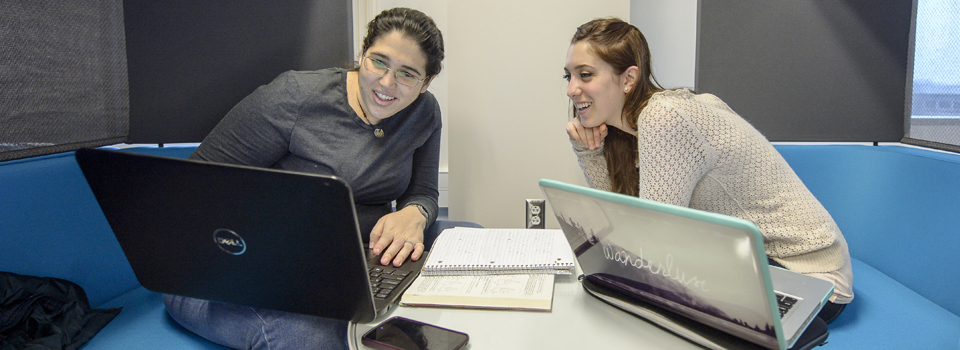Much more than growth
Much more than growth
| Author: | Amy Raley |
|---|---|
| Magazine Section: | Strategic Growth Initiative |
| College or School: | CoE |
| Article Type: | Section Feature |
| Page CSS: | /*** Important - hides the section name and tagline ***/
#section-header, #section-header .shadow-box { height: 20px; background-color: #eee; } #section-header { margin-bottom: 30px; } #section-header .section-name, #section-header .section-tagline { display: none; } .event-image-container.left { width: 200px; margin: 0 0 0 -215px; } .event-image-container.right { width: 400px; margin-right: -200px; } /*** increases height of #section-header ***/ #section-header { height: 340px; } |
The college is modernizing existing facilities and building others while hiring faculty and enrolling students in unprecedented numbers. The passive observer might assume that it is all about getting bigger, but Leah Jamieson, the John A. Edwardson Dean of Engineering, is quick to clarify that the changes underway make it much more than that.
“We are growing to answer the national mandate for more engineers and to meet demand from the rise in qualified student applicants to the College of Engineering at Purdue, but as we grow we are committed to transforming what we do and how we do it,” Jamieson says. “With our increase in students, faculty, and staff, our space needs are also growing — but we’re thinking far beyond the square feet needed to support the growth. We are aggressively reenvisioning and reinventing space in our core older buildings to create new efficiencies, flexible spaces to support emerging research areas, and environments that enhance collaboration. These new modern spaces will attract more of the best faculty and students. Ultimately this means that Purdue’s impact on the world will grow, too. So it is about much more than getting bigger.”
Building progress
On Sept. 19, a long-anticipated ribbon-cutting celebration for Seng-Liang Wang Hall on Northwestern Avenue featured Purdue dignitaries and family members of the late Seng-Liang Wang, who founded the Hong Kong based multi-national company Johnson Electric. The building is proving vital to the college’s growth and transformation.
Plans for Wang Hall to expand the home of the School of Electrical and Computer Engineering (ECE) predated the strategic growth initiative, but the building also has become valuable temporary space for faculty and graduate students from the School of Industrial Engineering displaced by Grissom Hall renovations. When they return to Grissom’s newly modernized space in fall 2015, the space they vacate in Wang Hall will provide temporary room for the occupants of the buildings in the next wave of renovations and major modernization, says Robert Frosch, professor of civil engineering and the college’s associate dean of resource planning and management.
In addition to transforming our existing core buildings, we are adding both capacity and capability through new building projects. In March, the Purdue Board of Trustees gave approval to plan, finance and build three engineering facilities, the value of which is estimated at $76.2 million. Plans call for construction of a flexible research lab facility, an addition to biomedical engineering’s Martin Jischke Hall and construction of a new building to add research capacity to the Zucrow High Pressure Lab.
Trustees authorized the planning, financing and development of construction contracts for the $54 million flex lab. The 75,000-square-foot lab will be a multidisciplinary research facility designed to bring together researchers from diverse backgrounds to enhance learning, collaboration and team-based research. The building will house wet and dry labs that will be designed to address the needs of today’s diverse research portfolio and adapt to changes in future needs. Infrastructure also will be put in place to accommodate potential expansion.
The lab will be financed with up to $38 million in proceeds from bonds, up to $13.5 million in gift funds and up to $2.5 million in the University’s central reserve funds.
At Jischke Hall, a three-story “Innovation Wing” addition and basement, totaling 32,000 square feet, will be added to expand and improve biomedical engineering capabilities. The $14 million addition — to be financed with gift funds — will house research labs, an expanded multidisciplinary student design lab, additional instructional spaces to support active-learning activities, and office and support spaces for instructional and research labs.
Zucrow Labs, located west of the main campus and home to interdisciplinary research on propulsion and combustion, will be the site of an $8.2 million project that will add 14,600 square feet composed of a new 9,600-square-foot building and a 5,000-square-foot renovation and addition to Zucrow’s Lab 3 building. The new building will house test cells, a laser lab and associated research preparation space, while the renovated and expanded area will house a control center and research offices, along with a new parking area. Funding for the project will come from $7.45 million in gifts, plus repair and rehabilitation funds.
Faculty growth
The need for more space becomes very apparent when one quantifies the space requirements of existing faculty researchers, those recently welcomed to campus, and those being recruited. From fall 2011 to November 2014, the college grew by 51 faculty members, and searches are either underway or planned to add 56 more toward the goal of growing the faculty size by 107.
Those faculty are serving an ever-expanding enrollment. The college’s fall 2014 enrollment totaled a record 11,083, with 7,877 undergraduates and 3,206 graduate students.
"These facilities will play a key role in helping us reach our strategic growth plan goals and realize the vision spelled out in Purdue Moves," Jamieson says. “That vision calls for the University to be affordable and accessible; to have transformative education; to conduct world-changing research; and to forge the way in STEM leadership. As we grow, we are meeting those goals by transforming, streamlining, and enriching what and how students learn. Faculty are broadening research into untapped areas, and all the work our students and faculty do is helping an ever growing number of people around the world.”


Comments